Museums of Savannah List
Ralph Mark Gilbert Civil Rights Museum
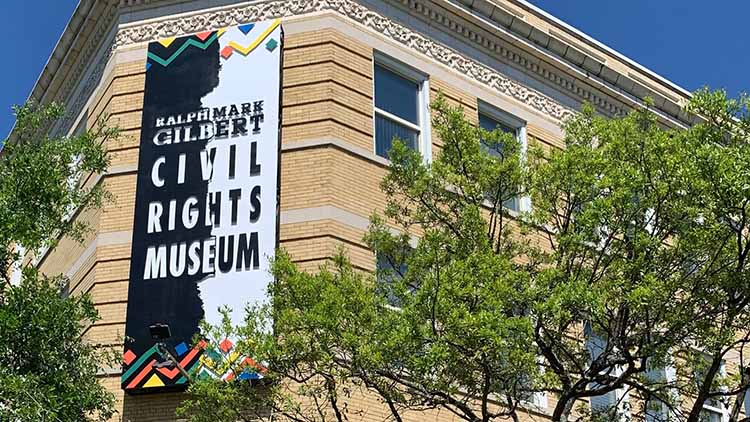
The Ralph Mark Gilbert Civil Rights Museum in Savannah is located in a restored 1914 building that once housed the Wage Earners Savings and Loan Bank, one of the city’s first Black-owned banks. Named after Rev. Dr. Ralph Mark Gilbert, the “father of Savannah’s modern civil rights movement,” the museum chronicles the city’s role in the fight for racial equality. Gilbert’s leadership in the local NAACP during the 1940s laid the groundwork for future activism, and the museum honors his legacy through powerful storytelling and historical displays.
Visitors explore three floors of exhibits tracing the African American experience from slavery through Jim Crow and into the 1960s. One highlight is The Meeting, a striking painting that depicts General Sherman’s 1865 gathering with Black ministers in Savannah, which led to the famous “40 acres and a mule” promise. Other features include a recreated lunch counter from Levy’s Department Store, a gallery dedicated to West Broad Street’s Black-owned businesses, and a church-inspired theater sharing first-hand stories from civil rights leaders.
Pin Point Heritage Museum
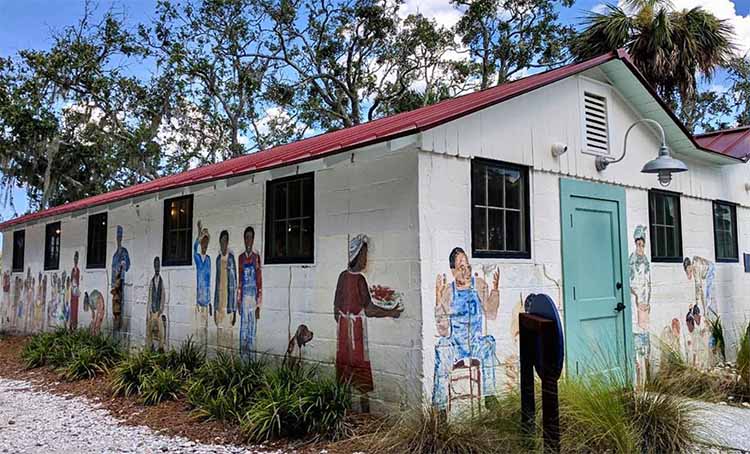
The Pin Point Heritage Museum preserves the remarkable history of a unique Gullah/Geechee community founded in the 1890s by formerly enslaved African Americans and their descendants. Located in what was once the A.S. Varn & Son Oyster and Crab Factory, the museum showcases the culture and traditions of Pin Point, a thriving settlement that operated for nearly 100 years. Through exhibits and guided tours, visitors explore the community’s religion, language, food traditions, and daily life experiences, gaining authentic insight into this historically significant coastal Georgia community.
What makes Pin Point Museum truly special is its direct connection to living history and culture. The educational center allows visitors to learn about Gullah/Geechee culture directly from residents who grew up in this small, close-knit community, making it an immersive cultural experience rather than just a static display. The area’s name “Pin Point” comes from how the land was originally divided into thin strips following emancipation, and the preserved factory buildings serve as tangible reminders of the community’s economic foundation in seafood processing that sustained generations of families.
Sorrel-Weed House
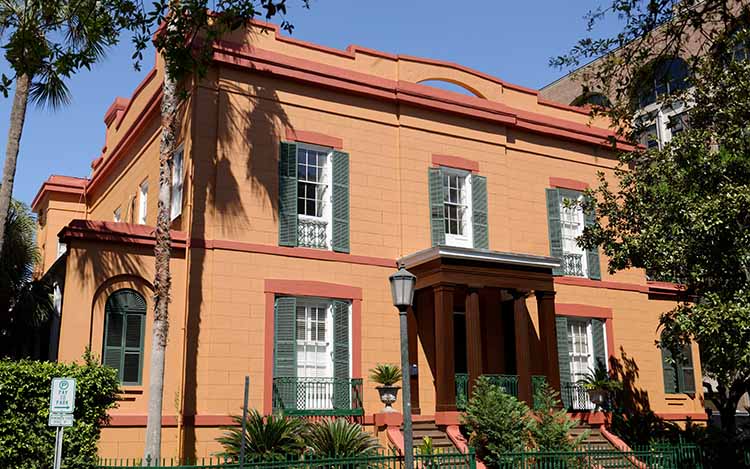
The Sorrel-Weed House stands as one of the finest examples of Greek Revival and Regency architecture in the area, constructed between 1835 and 1840 by renowned architect Charles Cluskey for wealthy commission merchant Francis Sorrel near Madison Square in Savannah’s historic district. The mansion features grand columns, intricate ironwork, and a sweeping double staircase leading to its imposing entrance, along with unique architecture, including its cantilevered balcony and double parlor. The home gained literary fame after being featured in “Midnight in the Garden of Good and Evil,” cementing its place in Savannah’s cultural landscape.
What makes the Sorrel-Weed House truly unique is its dual identity as both architectural masterpiece and paranormal hotspot. Its ghastly past has rendered it one of the most haunted locations in America, with a reputation for being one of the most haunted buildings in Savannah. The haunting reputation stems from tragic events including Francis Sorrel’s wife Matilda, who committed suicide, and Molly, his 16-year-old enslaved servant Sorrel–Weed House. Today, the mansion operates as both a historic house museum and paranormal investigation site, featured on shows like ‘If Walls Could Talk’, ‘Ghost Hunters’, and ‘Ghost Adventures’, offering visitors both daytime historic tours and evening ghost hunter experiences that explore its architectural beauty alongside its supernatural legends.
Green-Meldrim House
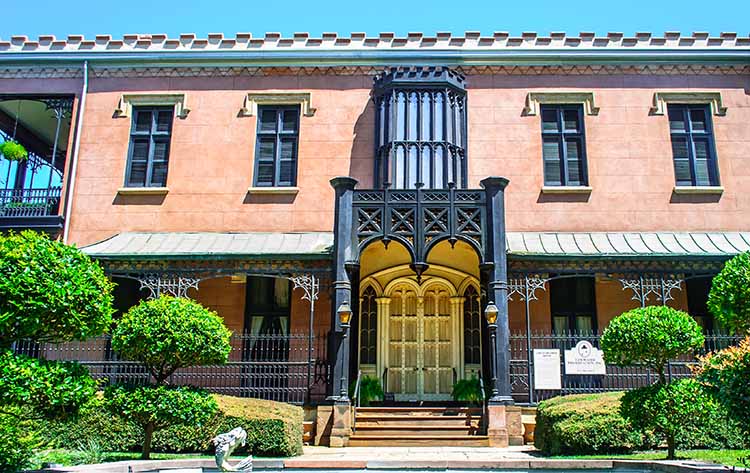
The Green-Meldrim House in Savannah, Georgia, is a stunning example of Gothic Revival architecture and one of the finest historic homes in the South. Built in the 1850s for wealthy cotton merchant Charles Green, the house is known for its intricate cast-iron work, pointed arches, and richly detailed interiors. Its architectural elegance and lush garden setting make it a standout on Madison Square.
What truly makes the Green-Meldrim House unique is its place in American history. During the Civil War, it served as Union General William T. Sherman’s headquarters after his famous March to the Sea. From this very house, Sherman sent his telegram to President Lincoln, offering Savannah as a Christmas gift in 1864. Today, the home is owned by St. John’s Episcopal Church and is open to the public for tours, offering a glimpse into Savannah’s antebellum grandeur and wartime legacy.
Savannah History Museum
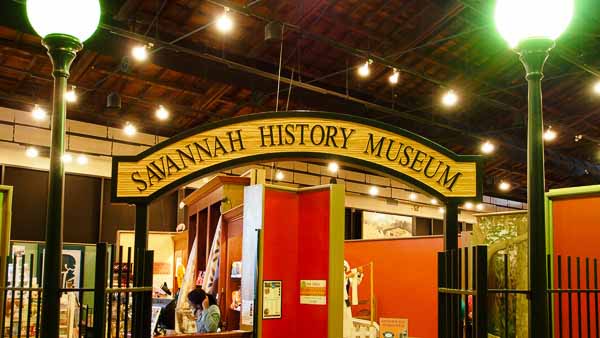
The Savannah History Museum offers a comprehensive journey through the city’s rich past, housed in the historic Central of Georgia Railway Passenger Depot, a National Historic Landmark that adds authenticity to the visitor experience. The museum showcases Savannah’s history from its founding in 1733 to the present day with over 10,000 artifacts, including paintings, photographs, documents, and household objects. What makes it particularly unique is its eclectic mix of exhibits, from an 1890 steam locomotive and antique cotton gin to pop culture items like Forrest Gump’s bench and one of Johnny Mercer’s Oscar Awards.
The museum’s strength lies in its diverse storytelling approach, covering everything from Native American cultures to the Revolutionary War, Civil War, and modern times. Special exhibits focus on Savannah’s jazz heritage and Juliette Low, founder of the Girl Scout movement, while rare Civil War artifacts include weaponry from the CSS Georgia and one of the world’s rarest keg torpedoes. This blend of local history, military heritage, and cultural contributions creates an engaging experience that captures Savannah’s unique role in American history.
Juliette Gordon Low Birthplace Museum
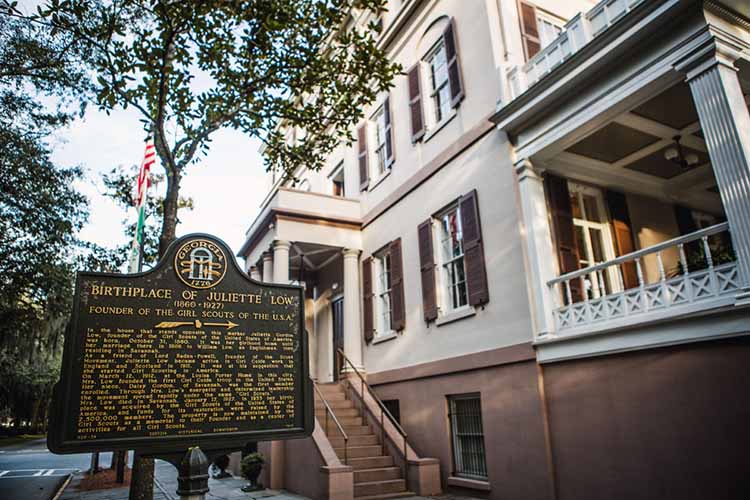
The Juliette Gordon Low Birthplace Museum preserves Savannah’s first Registered National Historic Landmark, Savannah, the elegant Regency-style mansion where the Girl Scouts founder was born in 1860. The museum features many original Gordon family furnishings, including art by Low, and was designed by English architect William Jay. Guided tours reveal intimate details of Juliette’s privileged Southern childhood and the social world that shaped her character.
Visitors experience authentic period rooms that tell the story of a remarkable woman who transformed from a spirited Savannah belle into a pioneering social reformer. The museum interprets the history of the Girl Scouts alongside Low’s personal journey, showcasing family artifacts, photographs, and personal belongings that illuminate her path from rebellious daughter to international leader. The house itself serves as a window into 19th-century upper-class Southern life, while chronicling how one woman’s vision created a Movement that continues to build girls of courage, confidence, and character across generations.
Ships of the Sea Maritime Museum
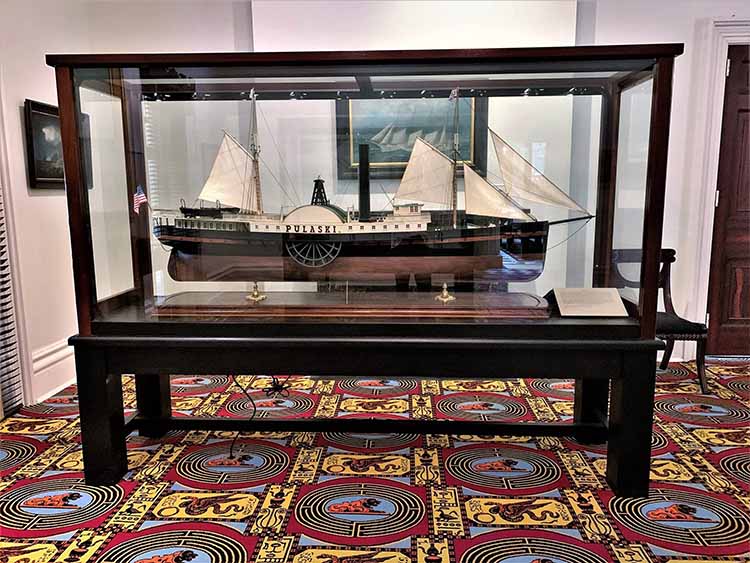
The Ships of the Sea Maritime Museum is housed in the historic William Scarbrough House, built in 1819 for a key owner of the SS Savannah—the first steamship to cross the Atlantic. The museum focuses on Savannah’s rich maritime history through nine galleries filled with meticulously crafted ship models, maritime paintings, and rare artifacts. The exhibits trace the evolution of seafaring from colonial times through the 20th century, with standout models of the SS Savannah, HMS Anne, the Wanderer, and RMS Titanic. Each model is built to scale and many were commissioned specifically for the museum, offering detailed insight into maritime design, commerce, and naval innovation.
Beyond its impressive collection, the museum also explores Savannah’s role in maritime trade, immigration, and shipbuilding. Informative displays and historic documents highlight how the city’s port shaped its economy and culture. The museum appeals to history buffs, ship enthusiasts, and curious visitors alike, providing an engaging look at the ships that once defined life along the Georgia coast. Thoughtfully curated and rich in detail, it offers a deep dive into Savannah’s nautical past in a stately and historic setting.
Davenport House Museum
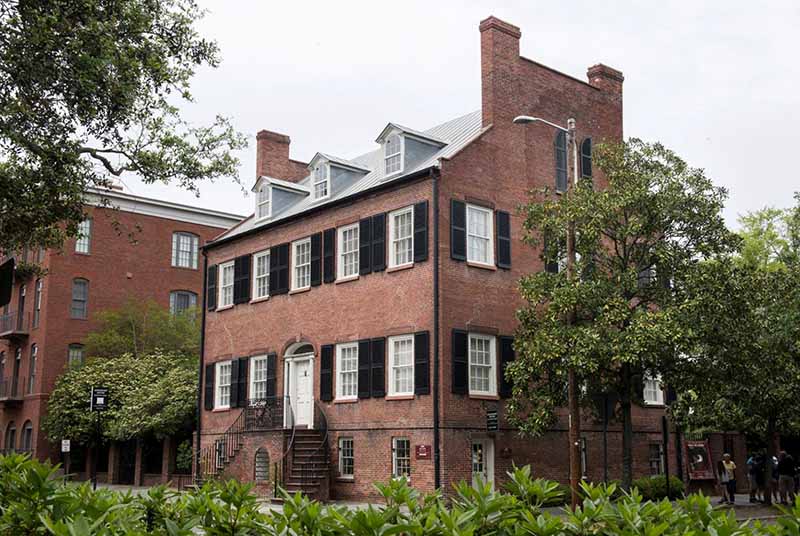
The Savannah Paranormal Museum is a unique attraction located at 415 W Boundary Street in Savannah, Georgia, dedicated to exploring the supernatural and unexplained phenomena. The museum features one-of-a-kind exhibits designed to ignite curiosity about paranormal activity, with an extensive collection of reportedly haunted artifacts and historical items connected to ghost stories and supernatural encounters.
The museum capitalizes on Savannah’s reputation as one of America’s most haunted cities, where fires, wars, and restless spirits have left an undeniable imprint. The museum is dedicated to the exploration of paranormal phenomena through the examination of history, uncovering the roots of ghost stories, haunted legends, and supernatural encounters is new spooky spot in Savannah. Visitors can examine real paranormal artifacts and decide for themselves whether the city’s eerie reputation stems from mere legend or something truly supernatural lingering in Savannah’s historic atmosphere.
Savannah Paranormal Museum
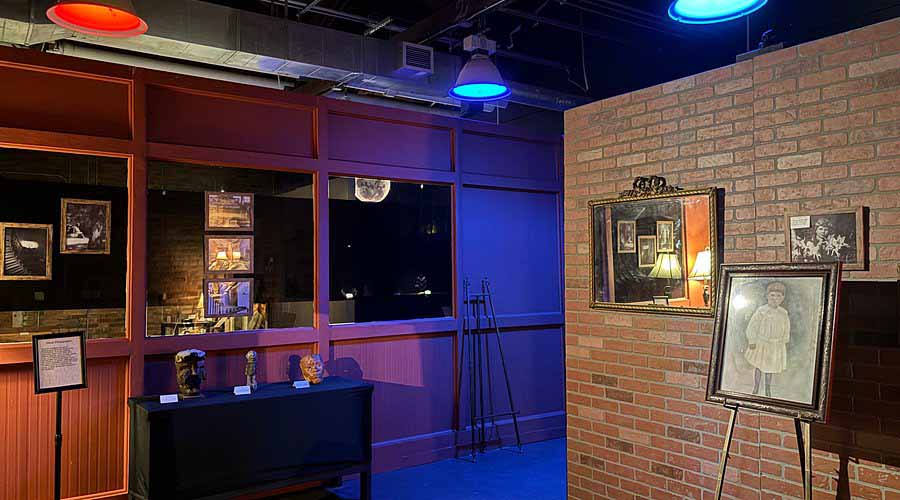
The Davenport House Museum, built in 1820 by master builder Isaiah Davenport, is a beautifully restored example of Federal-style architecture and one of Savannah’s oldest brick homes. Located on Columbia Square, it features elegant plasterwork, a graceful double staircase, and period-accurate furnishings that reflect the style and craftsmanship of the era. Visitors take a guided tour through the main rooms and bedrooms, learning about the daily lives of the Davenport family and the home’s construction.
What makes the Davenport House especially significant is its role in Savannah’s preservation movement. When it was slated for demolition in 1955, a group of local women saved it, founding the Historic Savannah Foundation. Today, the museum also includes exhibits on the enslaved people who lived and worked in the basement quarters, as well as stories from later residents like the Chan family, who lived there in the early 20th century. A peaceful courtyard garden completes the experience.
Andrew Low House
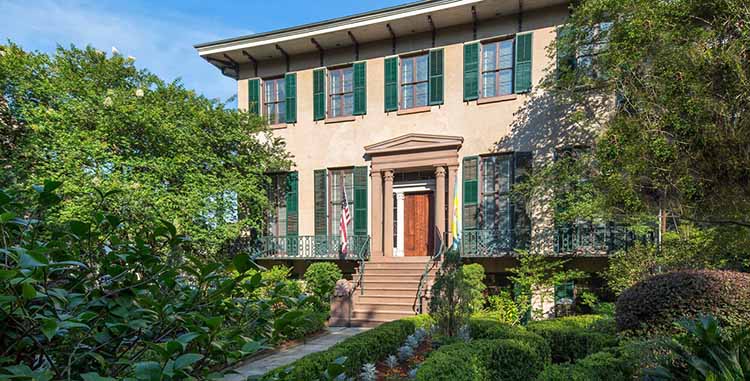
The Andrew Low House in Savannah, Georgia, is a striking example of Italianate architecture built in 1848 for wealthy cotton merchant Andrew Low. Set along historic Lafayette Square, the home reflects the opulence of Savannah’s antebellum elite with its ornate ironwork, grand staircases, and detailed plasterwork. It also offers insight into the city’s complex past, as it was a home built and maintained with enslaved labor. The house was later inhabited by Juliette Gordon Low, founder of the Girl Scouts, adding another layer of historical significance.
Today, visitors can explore the home’s period-furnished rooms, including the formal parlor, library, and bedrooms, which preserve the lifestyle of 19th-century Savannah society. Guided tours also highlight the contributions and lives of the enslaved people who worked in the home. The garden, carriage house, and original kitchen quarters help complete the picture of daily life in a historic Southern household. Its ties to both economic power and women’s history make it a unique and essential stop in Savannah.